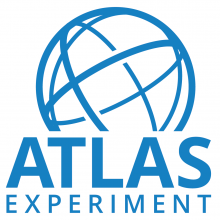Access to Collaboration Site and Physics Results
ATLAS Collaboration
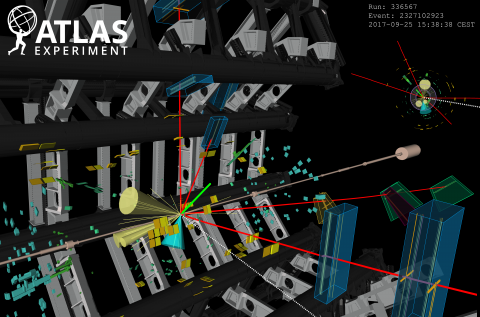
Summary of new ATLAS results for EPS-HEP 2019
ATLAS physicists are in Ghent, Belgium, this week for the European Physical Society Conference on High-Energy Physics (EPS-HEP) 2019. Since its establishment in 1971, the EPS-HEP conference has brought together the high-energy particle physics community every two years to discuss the latest results in field. This year, several hundred physicists from around the world are expected to attend.

ATLAS delivers its most precise luminosity measurement yet
The large amount of data delivered by the LHC in Run 2 (2015-2018) has not only allowed the ATLAS Experiment to probe previously unexplored territory for rare Standard Model processes and new physics, but also to measure already known processes to better precision. In both cases, but particularly the latter, a precise measurement of the integrated luminosity of the dataset is essential. In other words, how many proton collisions actually occurred in ATLAS during Run 2.
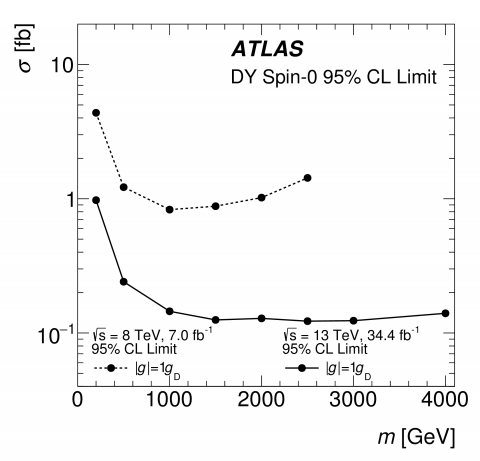
ATLAS releases new result in hunt for mysterious magnetic monopoles
Dipole magnets are probably the best-known source of magnetic fields. They consist of a north and south pole; while one end magnetically attracts, the opposite repels. If you cut a magnet in half, you are left with two magnets, each with its own north and south pole. This apparent absence of an isolated magnetic pole - or “magnetic monopole” - has puzzled physicists for more than a century. It would seem perfectly natural for this particle to be present in our universe; Maxwell’s equations would reflect complete symmetry between electricity and magnetism if particles with magnetic charge were observed. So far the mystery remains: while every known particle in our universe is either electrically charged or neutral, none have been found to be magnetically charged.
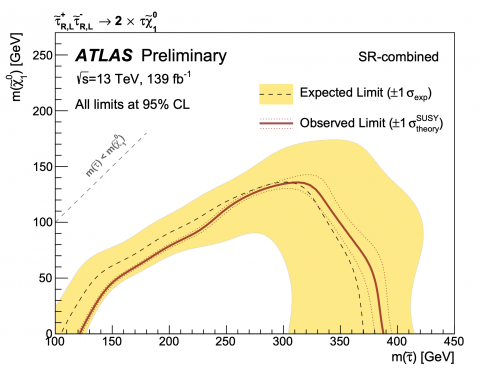
Searching for Electroweak SUSY: not because it is easy, but because it is hard
Today, at the Large Hadron Collider Physics (LHCP) conference in Puebla, Mexico, and at the SUSY2019 conference in Corpus Christi, USA, the ATLAS Collaboration presented numerous new searches for SUSY based on the full Run-2 dataset (taken between 2015 and 2018), including two particularly challenging searches for electroweak SUSY. Both target particles that are produced at extremely low rates at the LHC, and decay into Standard Model particles that are themselves difficult to reconstruct. The large amount of data successfully collected by ATLAS in Run 2 provides a unique opportunity to explore these scenarios with new analysis techniques.
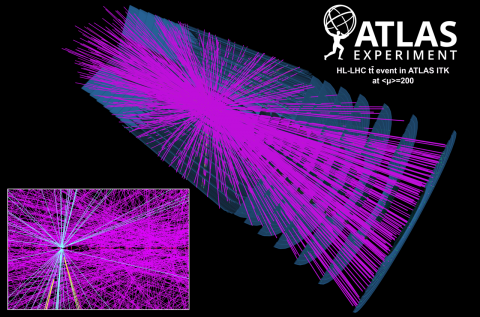
Exploring the scientific potential of the ATLAS experiment at the High-Luminosity LHC
The High-Luminosity upgrade of the Large Hadron Collider (HL-LHC) is scheduled to begin colliding protons in 2026. This major improvement to CERN’s flagship accelerator will increase the total number of collisions in the ATLAS experiment by a factor of 10. To cope with this increase, ATLAS is preparing a complex series of upgrades including the installation of new detectors using state-of-the-art technology, the replacement of ageing electronics, and the upgrade of its trigger and data acquisition system.
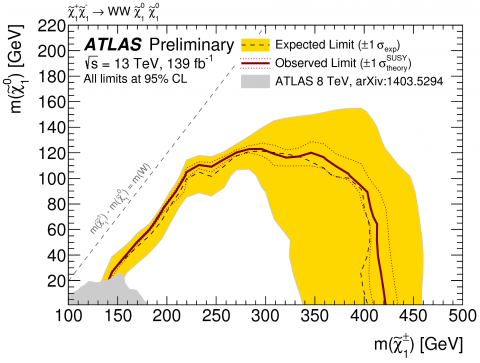
ATLAS sets strong constraints on supersymmetric dark matter
One of the most complete theoretical frameworks that includes a dark matter candidate is supersymmetry. Dark matter is an unknown type of matter present in the universe, which could be of particle origin. Many supersymmetric models predict the existence of a new stable, invisible particle - the lightest supersymmetric particle (LSP) – which has the right properties to be a dark matter particle. The ATLAS Collaboration has recently reported two new results on searches for an LSP where it exploited the experiment’s full “Run 2” data sample taken at 13 TeV proton-proton collision energy. The analyses looked for the pair production of two heavy supersymmetric particles, each of which decays to observable Standard Model particles and an LSP in the detector.
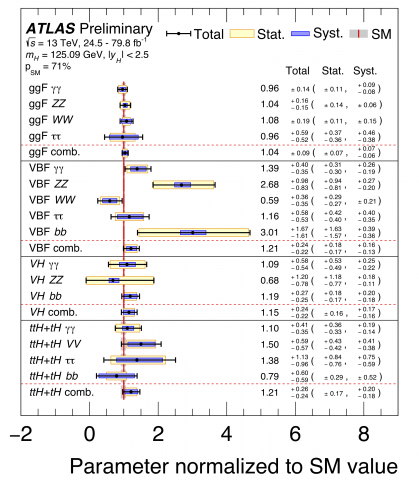
All together now: adding more pieces to the Higgs boson puzzle
The Higgs boson was discovered in 2012 by the ATLAS and CMS experiments, but its rich interaction properties (its coupling to other particles) have remained a puzzle. Thanks to an unprecedented amount of Higgs bosons produced at the LHC, all of the main Higgs boson production and decay modes have now been observed.

ATLAS measures Higgs boson coupling to top quark in diphoton channel with full Run 2 dataset
At the Rencontres de Moriond (La Thuile, Italy), the ATLAS Collaboration presented an updated measurement of ttH production in the diphoton channel. The result examines the full Run 2 dataset – 139 fb-1 collected between 2015 and 2018 – to observe ttH production in a single channel with a significance of 4.9 standard deviations.
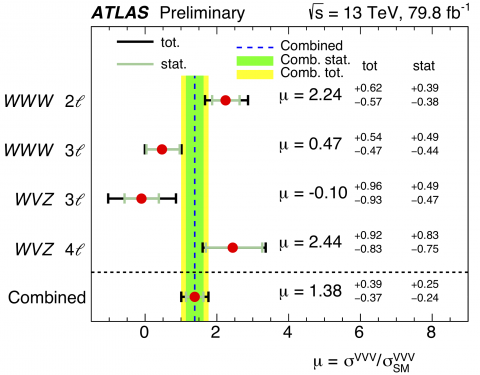
ATLAS finds evidence of three massive vector boson production
Today, at the Rencontres de Moriond conference (La Thuile, Italy), the ATLAS collaboration released evidence for the simultaneous production of three W or Z bosons in proton–proton collisions at the Large Hadron Collider (LHC). The W and Z bosons are the mediator particles of the weak force – one of the four known fundamental forces – which is responsible for the phenomenon of radioactivity as well as an essential ingredient to our Sun's thermonuclear process.
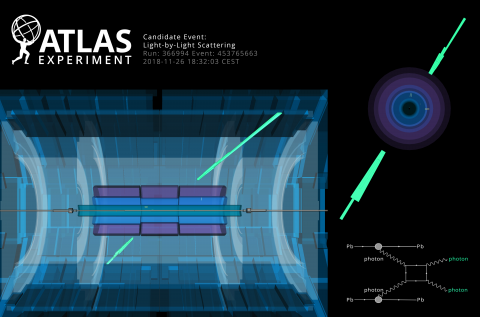
ATLAS observes light scattering off light
Light-by-light scattering is a very rare phenomenon in which two photons – particles of light – interact, producing again a pair of photons. The ATLAS Collaboration has reported the observation of light-by-light scattering with a significance beyond 8 standard deviations.


